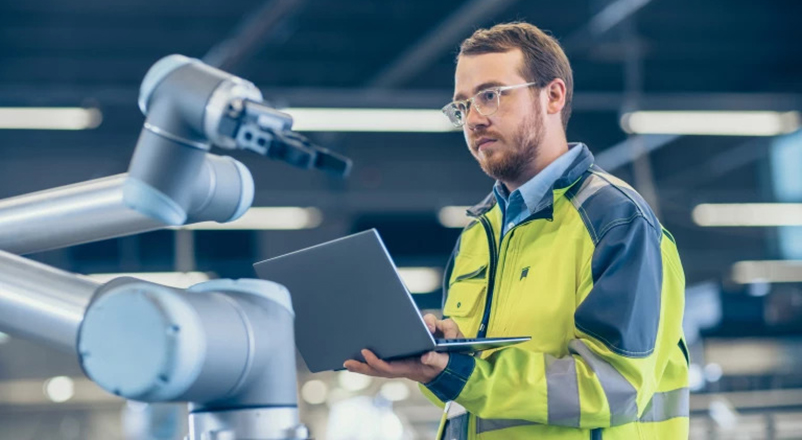
The Workforce pillar of the Fifth Industrial Revolution (5IR) addresses how humans and intelligent systems collaborate to create safer, more productive, and future-ready organizations. Unlike past industrial revolutions, where automation displaced large segments of labor, the 5IR emphasizes human-AI synergy—leveraging automation not as replacement, but as augmentation.
This involves retraining and redeploying talent, integrating intelligent machines and agents into daily workflows, and ensuring that knowledge is captured, documented, and auditable. Workforce transformation is a strategic enabler of all other 5IR pillars, from smart factories and AI data centers to energy complexes and autonomous mobility systems.
▢ Reskilling & Upskilling – Training workers for AI-era tools, robotics, and digital platforms. Ensures that human expertise evolves with automation rather than being left behind.
▢ Cobots – Collaborative robots designed to safely work alongside humans. Extend human capability, increase productivity, reduce workplace risk.
▢ Robots – Industrial and service robots operating independently. Enable automation at scale in manufacturing, logistics, healthcare, and beyond.
▢ AI Agents – Software-based assistants that automate knowledge work. Expand productivity in white-collar and compliance-heavy environments.
▢ Autonomous Fleets (AV Fleets) – Human–machine coordination in transport, delivery, and logistics Transforms supply chains, mobility, and service delivery.
▢ Documentation – Digital and auditable systems for capturing expertise and compliance. Ensures trust, transparency, and continuity across workforce transformations.
Human-AI Collaboration, Not Competition
The 5IR workforce is defined by augmentation: cobots extend physical labor, AI agents extend cognitive labor, and humans remain at the center of decision-making.
Continuous Reskilling as the Default
Unlike past one-time training models, 5IR industries require a permanent reskilling loop, powered by digital learning platforms and immersive tools (AR/VR, simulation).
From Labor Arbitrage to Talent Autonomy
Offshoring for cost savings is giving way to localized, high-skill clusters where humans, machines, and embodied AI co-locate in advanced facilities.
Documentation as a Workforce Multiplier
AI-driven documentation ensures not just compliance but institutional memory, reducing the risks of workforce turnover or disruption.
▢ Skills Gap – Workers lack training in AI, robotics, and digital platforms.
▢ Cultural Resistance – Fear of job loss or mistrust of automation.
▢ Safety Concerns – Risks in integrating robots and cobots alongside humans.
▢ Compliance & Documentation Burden – Regulated industries face overwhelming documentation requirements.
▢ Workforce Turnover – High attrition rates and loss of expertise in tech-driven industries.
▢ Integration of Autonomous Fleets – Workforce disruption in transport, logistics, and delivery sectors.
▢ Continuous Reskilling Platforms – Micro-credentials, immersive AR/VR training, and adaptive learning systems to close the skills gap.
▢ Human-AI Synergy Models – Transparent communication, participatory deployment, and augmentation strategies to reduce cultural resistance.
▢ Cobots & Safety AI – Deployment of collaborative robots with advanced sensing, AI-driven safety systems, and real-time monitoring.
▢ Automated Documentation Systems – AI-powered tools for audit trails, compliance validation, and digital twin integration.
▢ Knowledge Capture & Retention – AI agents for institutional memory, digital repositories, and succession planning.
▢ Hybrid Fleet Models – Human oversight for autonomous fleets, retraining drivers as operators and fleet managers.